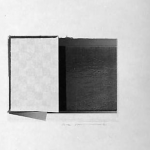What is chick-lit?
Diane GoodmanDiane Goodman on the anthology that helped put the term "postfeminism" into circulation.
the glory of the liberal white teacher woman
Lidia YukmanLidia Yukman describes the experience of teaching people of differing backgrounds.
Postfeminist Fiction
Elisa SheffieldElisabeth Sheffield on the implications of the anthology that helped to put the term "postfeminsim" into circulation.
Can’t We Just Call It Sex?
Dodie BellamyDodie Bellamy gets to the "dirty parts" of contemporary fiction.
Of Graphomania, Confession, and the Writing Self
Todd NapolitanoTodd E. Napolitano on the kitsch of on-line journals, most of which have flashed and disappeared since they were panned here, in the Fall 1996 ebr.
A Third Culture
De Witt Douglas KilgoreDe Witt Douglas Kilgore reviews Stanley Aronowitz, Barbara Martinsons, and Micahael Menser's Technoscience and Cyberculture (1996).
Stealing Glances: Women(‘s) Writing on the World Wide Web
Greg Dyer
Greg Dyer steals glances at women('s) writing on the World Wide Web.
Bare-Naked Ladies: The Bad Girls of the Postfeminist Nineties
August TarrierAugust Tarrier reviews the 1994 film, Bad Girls.
sokal text: another funny thing happened on the way to the forum
Joe AmatoJoe Amato on the Social Text controversy.
Writing Postfeminism
Lisa JoyceThe postfeminist issue of ebr was the first to use visual art as a means of navigation as well as illustration.
Stitching Together Narrative, Sexuality, Self: Shelley Jackson’s Patchwork Girl
George LandowGeorge Landow reviews Patchwork Girl by Shelley Jackson.
Feminism, Nature, and Discursive Ecologies
Stacy AlaimoHaving women in power won't automatically make for caring, sensitive environmental policies as Stacy Alaimo implies in her review of Carolyn Merchant and Val Plumwood.
“Thorowly” American: Susan Howe’s Guide to Orienteering in the Adirondacks
Lisa JoyceElisabeth Joyce reads Howe as a postfeminist Thoreau facing the dilemma that 'to inhabit a wilderness is to destroy it.'
Deleuze and Guattari, Cognitive Science, and Feminist Visual Arts: Kiki Smith’s Bodies Without Organs Without Bodies
Martin RosenbergMartin Rosenberg discusses Kiki Smith's feminist visual art and cognitive science.